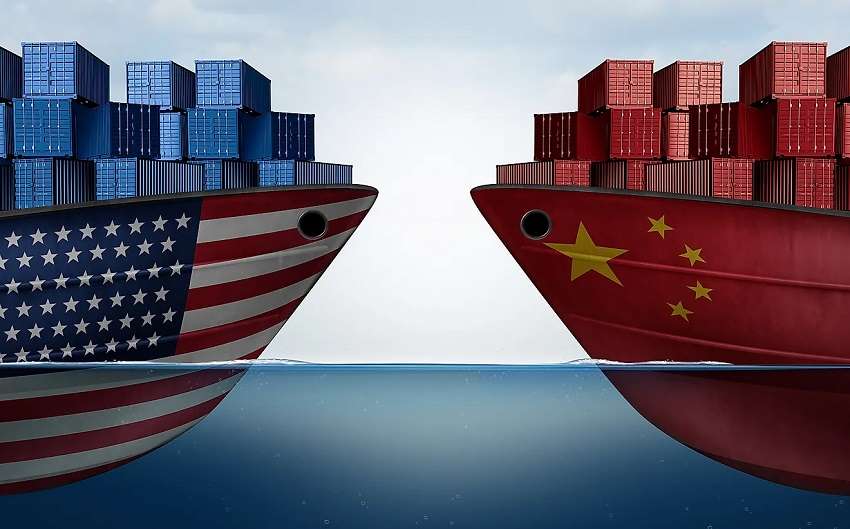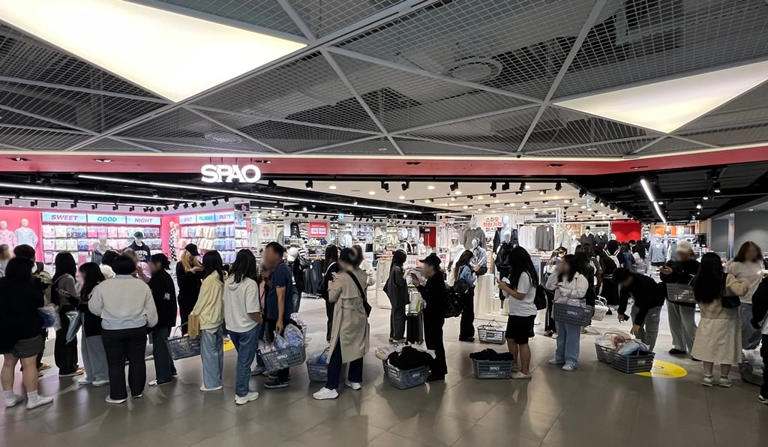FW
With Turkey planning to increase the minimum wage by 30 per cent from January, the experts are of the opinion that it could negatively impact sourcing of big retailers such as Carrefour, who largely depend on lower-wage employees. The ruling AK Party (AKP) campaigned in the November election on a pledge to lift the monthly net minimum wage to 1,300 lira ($461), appealing to the roughly five million minimum-wage earners struggling to make ends meet.
With minimum wage workers making up around a fifth of Turkey's 26-million strong workforce, the increase is expected to cost the private sector around $9.2 billion, according to an estimate by Umit Ozlale, an economics professor at Istanbul's Ozyegin University. While retailers could announce job cuts to rise in wages, margins are expected decline by 50-100 basis points across the sector.
Experts are of the opinion that the rise in the minimum wage could lead to further stoke inflation, now at around 7.6 per cent. It could also undermine confidence in the AKP's promises to strengthen fiscal discipline, risking further pressure on the lira, which has lost nearly a quarter of its value against the dollar this year.
Chemical maker Teijin is developing a new type of fibre that contains ingredients that protect the skin. The company has got an approval to manufacture and sell the new clothing material as a ‘beauty product you can wear’, the first allowed under the Japanese law. The company will partner with athletic clothing maker Descente to sell sportswear made for yoga and running from next summer. Teijin also plans to sell underwear under its own brand in fiscal 2016.
The fiber will be made of modified polyester polymer containing malic acid that will retain the skin's low acidity. Whenever perspiration forms and dries, the skin becomes alkaline, making it susceptible to microbes and other irritants. The fibre also releases compounds that interact with the skin's moisture to enhance beauty.
Synthetic fibre manufacturer Toray Industries is also seeking an approval to sell a type of clothing material as a medical device. The textile will be made for "smart clothing" that can monitor physiological data such as the heartbeat. The company plans to make a full jump into the medical device market after building trust in the product as a type of sportswear.
www.teijin.com
Patagonia has decided to follow ethical practices by changing the way denim is made and raising the bar for environmental and human rights practices – using innovative, environment friendly dyes, Fair Trade Certified sewing practices, and 100 per cent organic cotton grown without pesticides, herbicides, or synthetic fertilizers for its products.
The company’s new dyeing and manufacturing process developed by Archroma, uses Diresul RDT dyestuffs that easily blend with cotton, minimising the resource-intensive and environmentally destructive indigo dyeing, rinsing and garment washing process used to create traditional denim. Following sustainable manufacturing process, the company is using 84 per cent less water, 30 per cent less energy and emitting 25 per cent less CO2 compared to the earlier conventional synthetic indigo denim dyeing processes.
All Patagonia denim is made with organic cotton that is grown without chemical or synthetic fertilizers, poisonous pesticides or herbicides. The entire process results in a colour-rich, durable style – avoiding the environmental downsides of sandblasting, bleaching and stonewashing jeans.
To promote its ethical production practices and create awareness about the impact of denim industry on environmental and social life, Patagonia also launched a campaign in August called ‘Because Denim is Filthy Business’.
www.patagonia.com
Lectra has appointed Jean-Patrice Gros as Director of Lectra Northern Europe (United Kingdom, Belgium, Netherlands, Denmark, Sweden, Norway, Finland, Estonia, Latvia and Lithuania).
Based in Belgium, Jean-Patrice Gros will focus on anticipating and responding to Lectra’s customers’ needs in the fashion, automobile and furniture industries, three strongly developing markets. “Jean-Patrice Gros’ appointment to the head of this region demonstrates Lectra’s strong commitment to developing its activity with brands, retailers and manufacturers,” states Daniel Harari, Lectra CEO, adding, “During his career, Jean-Patrice has provided his experience to many diverse-sized companies, with very different processes and business models.
” In fashion, British, Belgian and also Dutch designers are amongst the most reputed. Moreover, the region is the birthplace of a number of major apparel retailers. These companies are increasingly attracted to the quality of Lectra’s collaborative design and product development software, with particular interest in its product life cycle management (PLM) solution. In the automotive market, English brands are prospering and capitalizing on the comfort of car interiors, which are increasingly sophisticated and using more leather. They want to quickly implement advanced leather cutting solutions, an area in which Lectra has heavily invested in the past few years.
Owing to their in-depth design skills, Scandinavian and Benelux countries are at the avant-garde in the furniture industry. Many of the world’s biggest brands are based in the region. In these countries, Lectra’s new solutions dedicated to the furniture market—which facilitate the leather and textile design and manufacturing processes—are enjoying growing success.
Jean-Patrice was previously director, Middle East and North Africa, where he accompanied Lectra’s customers in their strategy of creating value and strengthening their links with European manufacturers. Working at Lectra for the past 30 years, Jean-Patrice has been successively member of the professional services team, responsible for the International Advanced Technology Centre of Bordeaux (France), before being appointed head of sales in Canada and director of the Maghreb region.
www.lectra.com
Yiwu Tex will be held in China from November 30 to December 3. This is an international exhibition on textile machinery. It will showcase the latest automated textile machinery and present new textile technology applications in knitting and garment making, medical hosiery, seamless underwear, functional sportswear, footwear and other sectors.
There will be three theme zones, a knitting and hosiery machinery zone, a sewing and automatic garment machinery zone, and a dyeing and finishing machinery zone. Local and provincial environmental protection bureaus will discuss the latest sewage policy. Overseas experts will introduce the latest technology in the dyeing industry. Eco friendly and sustainable production schemes for dyeing factories will be promoted.
One forum will focus on knitting fashion trend forecasts and give insights into the application of new functional fibers, which will help enterprises to keep abreast with fashion trends and the latest textile technology. Among those participating are silk stocking and cotton socks manufacturers, luggage and leather manufacturers, printing, dyeing and finishing factories, embroidery factories, knitwear manufacturers, fiber and yarn manufacturers, luggage and leather manufacturers, trade companies and merchandisers, dealers, agents and distributors.
The textile industry in China is undergoing a transition and transformation and upgradations are taking place.
www.yiwutex.com/
IndustriALL Global Union and Hennes & Mauritz (H&M) have collaborated to train its direct suppliers and their workers in improving relations and dialogue between social partners. Lately, labour unrest has shaken the Asian garment industry. The unrest was due to low wages and poor working conditions, such as pay protests in Cambodia in 2014.
Asian low-cost countries are the ones where Sweden-based H&M sources from. At H&M, collective bargaining and talks between employers, employees and unions play a big role in wage-setting. Anna Gedda, Sustainability Chief, H&M, says the union association would train managements and workers in negotiating wages and working conditions and promote collective agreements and freedom of association. Besides, they would offer advice and support in solving conflicts and would also train the parties in how to solve conflicts, she added.
Gedda stated they wanted to achieve functioning labour market relations in these countries, like in Sweden and that workers should be able to negotiate salaries, solve conflicts peacefully and organise themselves in unions. The initial focus would be on H&MS’s Bangladesh, Cambodia, Myanmar, and Turkey sourcing companies. She added that around 600 direct suppliers in the four countries would start receiving training in 2016.
Gedda also mentioned that they would demand the participation of suppliers in training and in the event a supplier does not wish to participate, they would discuss what relation they will have with them in future.
Production of man-made fabric in Surat has drastically decreased after Diwali as more than 60 per cent workers in the power loom units have not returned from their hometowns in Bihar, Uttar Pradesh and Orissa. Production of unfinished fabric has been reduced to almost half, at 1.5 crore meters per day, against three crore meters per day on an average before Diwali.
The festival season is still continuing in most parts of the country including north and southern states and demand for fabrics is still high. The incessant rain has cast a dark shadow over the supplies of fabrics to Tamil Nadu and Andhra Pradesh, but traders are confident that the demand will rise in the coming days.
Power loom units in Surat employ around 7.5 lakh workers. Around 90 per cent of workers are migrants hailing from Bihar, Orissa, Uttar Pradesh and Maharashtra. Most of the workers are from Bihar.
Many power loom weavers have been forced to operate their units in a single shift due to the shortage of workers. Many weaving units in fact did not close their units for Diwali. They increased wages of migrant workers fearing that they would not return after the festival.
Indonesia, having largest Muslim population in the world is on the way to become the global Islamic fashion capital, especially for Muslim women. Indonesia has a population of over 250 million, of which 85 per cent are Muslims. Indonesian Muslim women, including young girls, are increasingly wearing Islamic clothing as they are fashionable, decent, practical and comfortable.
According to Deputy Minister of Cooperatives and SMEs Emilia Suhaimi, Indonesia is designated to emerge as the worlds Islamic fashion capital by 2020, and that the country is close to achieving that target. Besides being the largest Muslim populated country in the world, says Suhaini, Indonesia’s Islamic culture is open to modernisation, tolerance, pluralism and diversity.
Malls and shops specializing in selling Islamic clothing are also on the rise in Jakarta and other cities such as Thamrin City, Tanah Abang, and Cempaka Mas Malls. Specific shops offering high-quality Islamic fashion are the Shafira, Al-Fira, Al-Misa, Kisa, Zara, Zahra, and Rabbani, among others. And online shops like Hijabenka HijUp, Saqina, Muslimarket, Zoya, Zalora, Elzatta, Idhijab, Rahma o-shop, Artizara, Inayah, and Modanisa are now actively retailing Muslim fashion. Islamic fashion shows are also organised in the city every year to promote the domestic Islamic fashion industry at the international level.
Such events include Indonesian Muslim Fashion Week (IMFW) which was organised in Bandung, West Java, from July 18-20, 2014, the annual International Indonesian Islamic Fashion Fair held in September 2015 at the Jakarta Convention Center (JCC) organised by the Indonesia Islamic Fashion Consortium (IIFC). Muslim fashion designers from the country also participate in overseas exhibitions.
The sector will be worth $327 billion by 2020, according to the State of the Global Islamic Economy report. The 1.6 billion Muslim consumers spent $266 billion on clothing in 2013, and are projected to spend $484 billion by 2019, according to a report by Thomson Reuters and Dinar Standard, a Muslim market research firm.
Nearly one lakh workers have been rendered jobless in West Bengal due to the raw jute crisis. Malay Ghatak, a joint representation of mills to state Labour Minister, said that until now 12 jute mills have closed down due to which almost one lakh workers have lost their jobs. Already a huge number of mills have cut down production and worker surplus is increasing in each mill sated the joint representation letter. The Jute Packaging Material (Compulsory Use in Packing Commodities) Act, 1987 (JPM Act, 1987), which was aimed at saving workers and farmers has gone wayward.
In wake of lower supply by the jute mills, which is due to the shortage of raw jute, the Ministry of Textiles has diluted the mandatory jute packaging material. The belief that production could be low due to bad weather conditions and poor rainfall is one of the main reasons for this hoarding and speculation in raw jute by a few mills and some unscrupulous stockists and traders.
The Jute Commissioner's office is yet to launch any anti-hoarding drive under Jute and Jute Textile Control Order 2000 informed the jute mills. It is yet to take steps to regulate and limit stock and price of raw jute to control speculating operation and prevent unfair trade practices.
PBT fiber is a new polyester fiber and many apparel manufacturers are now opting for it. The elastic recovery ratio of PBT fiber is better than that of polyester and nylon fibers but lower than that of spandex. With good rigidity, shape stability and wool-like touch, PBT fiber has potential in application of wool textiles.
Spandex core-spun covered yarn is a kind of woven yarn mainly used in woven denim and polar fleece. The applications of PBT core-spun covered yarn and spandex core-spun covered yarn are thus different. PBT core-spun covered yarn is not an alternative for spandex core-spun covered yarn. The equipments of the two yarns are the same. Profits of spandex core-spun covered yarn are apparently lower than that of PBT core-spun covered yarn. So plants prefer PBT core-spun covered yarn. Spandex sales will inevitably be hit.
More spandex covered yarn plants in China are opting to produce this yarn.PBT yarn is weft knitted to produce autumn or winter sweaters. In China the plants that have switched production to PBT yarn are mainly small processing plants while the larger ones are relatively cautious. Some spandex core-spun covered yarn plants with relatively good profits have not switched production yet, but more are about to step into the wave due to successive good performance of PBT core-spun covered yarn.












